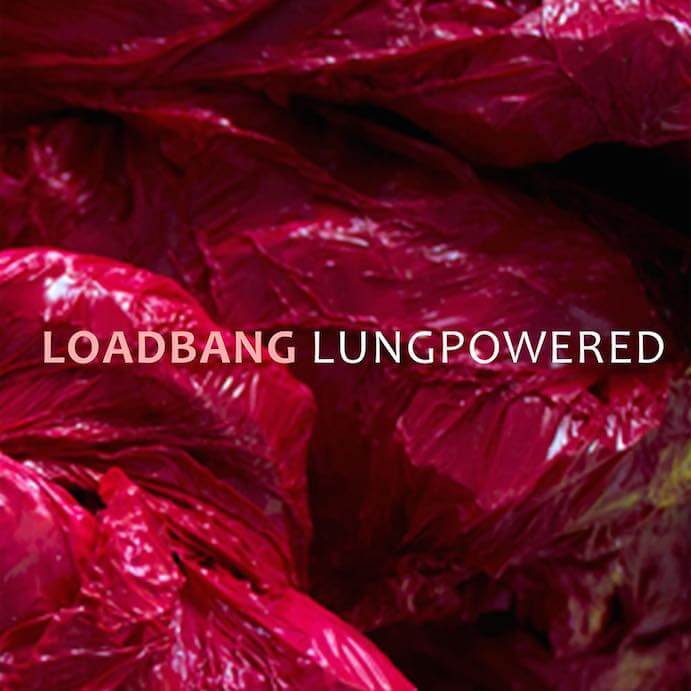Brassy, brazen, unexpected: for experimental-minded people, this is how new music should be. The quartet loadbang certainly fits that bill. Trombone, trumpet, baritone, and bass clarinet– definitely brassy and confidently brazen as well as unexpected in instrumentation. As Ian Power continually asks in his program notes to Lungpowered, loadbang’s 2015 release on New Focus Recordings, “Who came up with this idea?”
Founded in 2008, loadbang consists of baritone Jeffrey Gavett, trumpeter Andy Kozar, trombonist William Lang, and bass clarinetist Carlos Cordeiro. Many composers would shrink from writing for such a combo. Bottom-heavy, anti-blend, voice integrated into a chamber ensemble: it’s not the simplest challenge. Yet on Lungpowered, Alexandre Lunsqui, Scott Worthington, Alex Mincek, David Brynjar Franzson, Reiko Fueting, and William Lang rise to the occasion, with varying degrees of success. The first half of the recording is the better half. Where the second half consists of overly-lengthy pieces that mostly explore a single idea, the first three pieces are wildly inventive, structurally effective, and enticing in their strangeness.

loadbang
Lungpowered opens not with a loaded bang, but a rhythmic stutter. Alexandre Lunsqui’s Guttural is a tour de force of loadbang’s idiosyncratic possibilities. It packs in percussive syllables, whistles, and shouts, muted brass shrieks, rustling air noises, thwacking sounds, and a thunderbolt of a multiphonic on bass clarinet in addition to the traditional tones of the instruments. The rhythmic vigor of the first movement, the second’s nervous hush continually disrupted by explosive outbursts, and the melting surges of the third that sound like a Surrealist version of an air raid siren are exuberant and delightful.
Infinitive, by the double bassist and composer Scott Worthington, is a perfect complement to Guttural. Softly-glowing chords illuminate thick silences while movement is reduced to a minimum as individual parts quietly bloom into the harmony. Coarse sounds return in Alex Mincek’s dynamic Number May Be Defined. Frantic unison squalls rush into the spaces between Gavett’s high chanting. Later, unpredictably-spaced single notes call to mind a hospital monitor that eventually goes haywire, breaking into subdued chattering. This comic babbling leads to an extraordinary ending featuring an oscillation between two otherworldly overtones.
Unfortunately, the rest of the recording lacks the brash excitement of the first half. David Brynjar Franzson’s Longitudinal Study No. 1 could be wind rustling past a window, occasionally working itself up to a gust that wrenches the frame. This goes on for ten minutes. William Lang, loadbang’s trombonist, contributes a similarly lengthy piece, the seven-minute There Might be One More. Its screechy sine-wave-like tones sound more like electronics than the harmonicas that each member of loadbang exchanges their instrument for. The slow coalescence of a shimmering chord at the end is beautiful, but it takes a long time to get there. Finally, Land of Silence by Reiko Fueting, explores bits of material, rotating them against a backdrop of sucking, hissing, plosive sounds. This is the most successful piece on the latter part of the recording, with its sonic ingenuity and closing baritone solo. That solo descends slowly in range and its traditional singing is spiked with a variety of mouth sounds. This is intriguing, progressive writing for the voice fulfills the apparent aim of loadbang: to be new, confident, and weird.
While it’s doubtful that loadbang will find themselves with many copycat ensembles, their fearless desire to go against the grain and search out different sounds and combinations is an example that should be followed. The danger, as illustrated by the second half of Lungpowered, is that a post-Lachenmann intellectual fixation on timbre becomes the goal. Novelty– an attempt to make an instrument do something it hasn’t done before– is never fulfilling on its own. Rather, such experimentation should be used as a tool, not a self-justifying end.





















